
Brogue
A brogue is a stout shoe with heavy perforations along the seams (called broguing) and usually a wing tip. Originating from Ireland, the brogue was originally designed to be an outdoor worker’s shoe and made from untanned hides.
Brogue comes from Irish bróg & Scottish Gaelic bròg, and while it might make you think of a thick accent, that word brogue comes from a different Irish word, barróg, which means "accent" or "speech impediment."
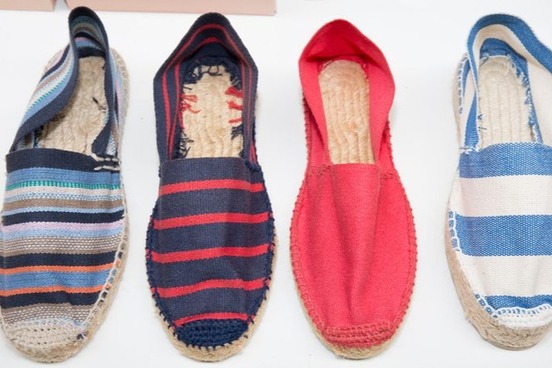
Espadrille
Espadrilles usually refer to a kind of sandal, but are sometimes generally used for any kind of slip-on shoes with fabric upper parts and a flexible sole traditionally made from a Spanish fiber called esparto, from which the name derives (via French).
The shoe has a long history of being worn in the Catalan and Basque regions of Spain, particularly by the lower classes.
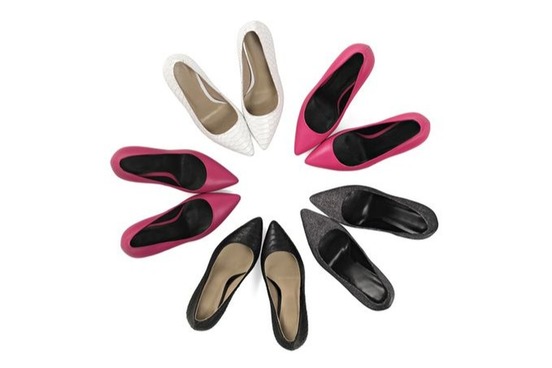
Pump
A pump is a shoe that grips the foot chiefly at the toe and heel and so does not need to be laced due to its tight fit. The pump we most commonly think of today is a woman’s high-heeled shoe, but in the early twentieth century even men wore pumps during formal occasions (such as going to the opera), and men’s athletic footwear were advertised as pumps.
Why we call such a shoe a pump is not known (nor if it is at all connected to the pump that moves air or fluids), though many theories have been proposed. The existence of a brand-name sneaker called Pump (made to inflate for cushioned support) complicates matters slightly.
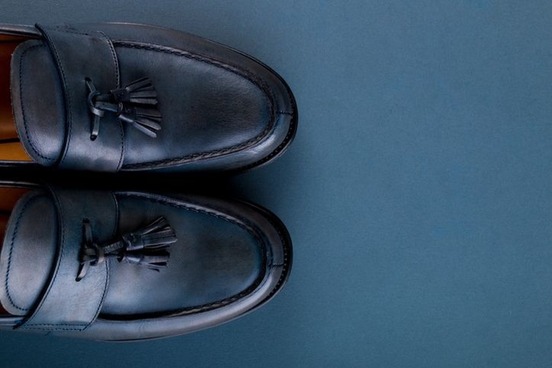
Loafer
The comfortable man’s shoe called a loafer is designed to be slipped on and off the foot with ease. It shares its name with a word for an idler or layabout that might have been a shortening of landloafer, from a German word for “tramp” (Landläufer from "land" + Läufer, from "runner").
The penny loafer, popular with students in the 1950s, included a strap across the upper for holding a penny.
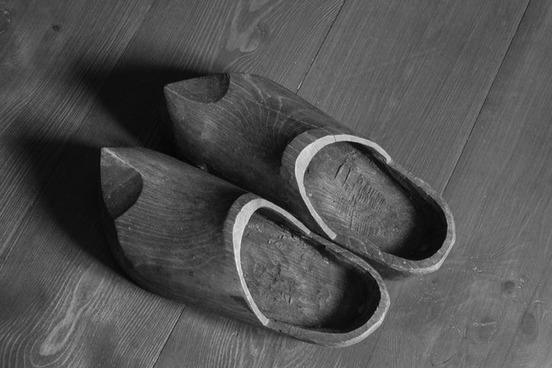
Sabot
Sabot can refer to any of various wooden shoes—known generally as clogs—worn chiefly in Europe and thought to have originated in France, where they were common among the working classes. Some sabots have uppers made of leather.
Sabot also referred to a different kind of shoe, the kind used to fasten rails to railroad ties.
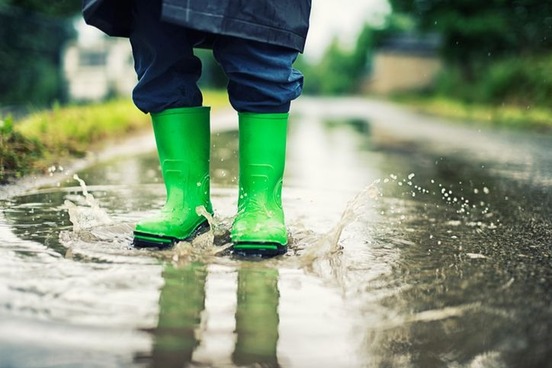
Galosh
The most common galoshes are overshoes made of rubber, worn to protect one’s regular shoes from snow and slush. In medieval times, however, the term referred to a more standard wooden shoe similar to a sabot.
Due to their usefulness in wet weather, some might interpret the word galosh to describe the sound of a foot stepping in a puddle of slush, but it actually derives from a Medieval word for the wooden shoe borrowed (via Middle French and Anglo-French) from Old Occitan.
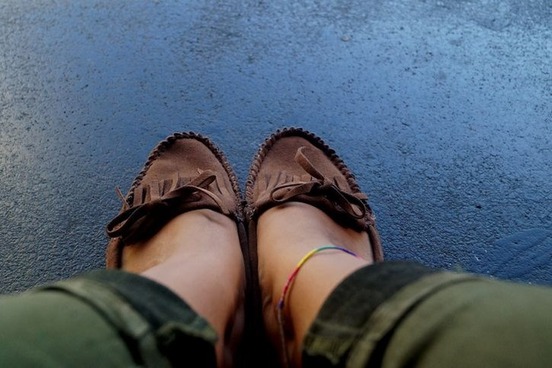
Moccasin
Moccasin derives from a word from Virginia Algonquin and originally referred to a leather shoe or boot without a heel, worn chiefly by indigenous people of North America. The shoe is made of one piece of leather and stitched together in a puckered seam at the top.
Most shoes called “moccasins” today don’t adhere to that design, but are called that from their resemblance due to the stitching on top:
Inspired by 1950s driving shoes popularized by the late Fiat head Gianni Agnelli, the iconic moccasins are available in more than a dozen colors and come in supple suede, nubuck, and leather.
— Adam Glassman, O: The Oprah Magazine, April 2015
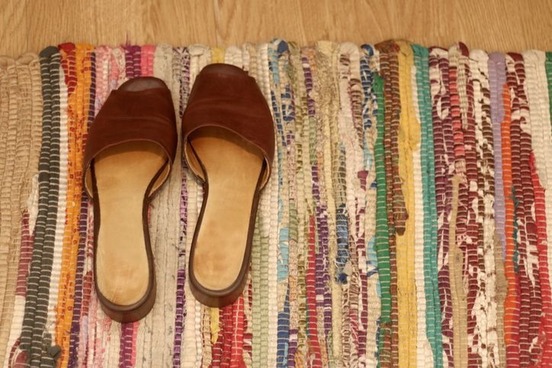
Mule
A mule is a shoe or slipper without a back side or strap around the heel. Originally intended for indoor wear like a bedroom slipper, some more stylish versions can be worn out in public today.
The shoe called a mule is not related to the notoriously stubborn animal. The name for the shoe derives from a Middle French word for a kind of slipper, which came from the Latin mulleus, a shoe worn by magistrates. The animal’s name ultimately derives from the Latin mulus.
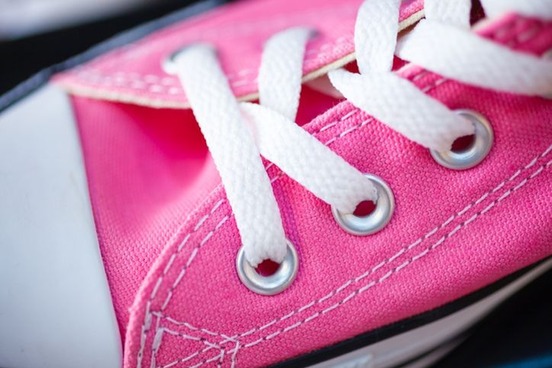
Plimsoll
Plimsoll is the preferred term in British English for a canvas athletic shoe with a flat sole such as one would wear on a boat or for playing basketball (while trainer typically applies to the leather sneaker).
The name comes from the supposed resemblance of the upper edge of the shoe's mudguard to the Plimsoll mark on a ship. Such marks, devised by a British MP named Samuel Plimsoll (1824-1898), are meant to indicate the maximum amount of water a freight vessel can safely displace while maintaining buoyancy.
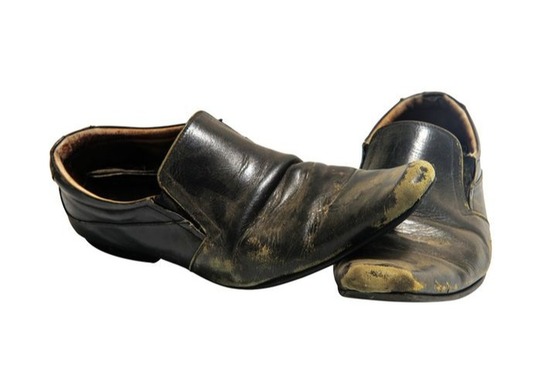
Winklepicker
A winklepicker is a shoe or boot with a sharp-pointed toe. Popular in the 1950s, they are associated with the underground rock scene in Great Britain.
The winkle in winklepicker is short for periwinkle, a kind of marine snail. The verb to winkle means to extract something from a tight position, such as a snail from its shell; in World War I, the Allied Powers used the verb to describe the action of dislodging enemy soldiers from their trenches. The name of the shoe alludes to the notion that the toe is pointy enough that you could conceivably extract a mollusk from its shell with it.





